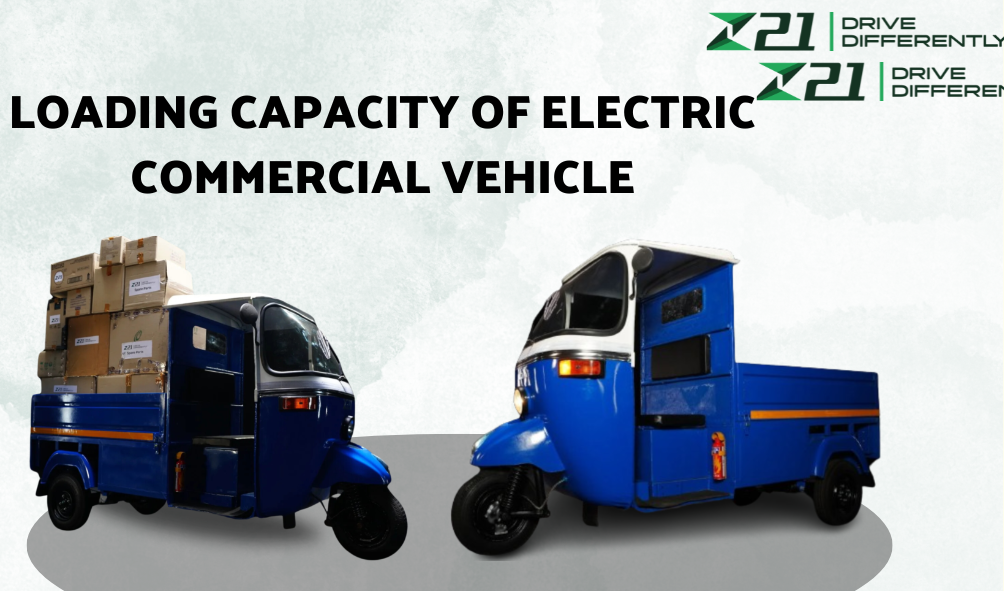Since electric commercial vehicles are being adopted in logistics and transport, it is important to understand their loading capacity of electric commercial vehicles. This knowledge is beneficial when it comes to decision-making in relation to range, efficiency, and operational requirements of the business. This guide discusses the general loading capabilities of electric commercial vehicles, influences on payload, and recommendations for optimization.
What is the Loading Capacity of Electric Commercial Vehicles?
The loading capacity of the electric models of the commercial vehicle means the maximum weight or volume that can be carried safely. It is the ability to carry load and is influenced by the size of the vehicle, battery power or motor, and is usually measured in kilogram (kg) or ton. Light electric vans can take up to 500- 1500 kg while light trucks can handle up to 5000 kg allowing them to be used in urban delivery services and for short distance haulage.
Classification of Electric Commercial Vehicles and Their Usual Payload Capacity
Different types of loading capacity of electric commercial vehicle to suit diverse transport needs:
- Electric Vans
Electric vans are perfect for final mile delivery and city logistics. It comes with a loading capacity of between 500- 1,500 kg which makes it ideal for small business, local transport and lightweight products.
- Electric Light Trucks
They can transport between 1,500 – 3,500 kg which makes it suitable for medium size cargo carrying. These vehicles are normally used for delivery of retail goods, food stuffs and any other moderate weight merchandise over short to medium distances.
- Electric Medium-Duty Trucks
Medium duty electric trucks are built for more substantial loads; they can carry up to 5,000 kg. They are suitable for bulk delivery of goods such as construction materials, industrial products and are widely used in sustainable transportation in urban and suburban regions.
- Electric Heavy-Duty Trucks
Although currently in their infancy, electric heavy-duty trucks can be designed to carry loads of 10,000 kg or more. With further development of battery technology, these vehicles are to provide increased range and power, which will make the concept of using them for large-scale logistics appealing.
Dynamics of Loading Capacity of Electric Commercial Vehicles
While the loading capacity of electric commercial vehicle models is primarily determined by design and battery power, other factors can influence performance:
- Battery Size and Power
Bigger batteries give more energy and this enables the vehicle to haul more load. Nevertheless, improved load weights may have potential to draw power from the battery at a faster rate, hence limiting the range. The load weight on the battery has to be balanced with battery capacity to achieve the best results.
- Motor Strength
The power of a motor determines the ability of an electric commercial vehicle to perform in the face of a load. Higher power motors are useful for high loading capacities and are ideal for medium to heavy duty applications.
- Terrain and Road Conditions
The nature of the ground influences the ability of a carrier to move its cargo. Level ground is preferred because it provides full loading, and steep or rough surfaces demand more power which may lower loading capacity and distance.
- Vehicle Design and Materials
As mentioned earlier, capacity is influenced by the structural design and the quality of the material used in construction. Lightweight and strong materials can be used in the construction of electric commercial vehicles which can in most cases carry more loads as compared to when using other types of vehicles.
- Weather Conditions
The batteries’ efficiency decreases with polar temperatures; this reduces the car’s range and its load-carrying ability. Cold temperatures will have a negative effect on battery performance while hot temperatures will cause faster discharge when loads are drawn on it.
Optimization of Efficiency in the Electric Commercial Vehicles
To make the most of the loading capacity of electric commercial vehicle options, businesses can take certain steps:
- Plan Routes Strategically
Reduction of the number of stops, preventing the vehicle from ascending steep grades, and using smooth terrains all contribute to the conservation of energy hence increased range. For heavy loads it is beneficial to consider routes that include charging stations for longer routes.
- Regular Vehicle Maintenance
Battery, tire pressure, and motor check are some of the regular services that have to be conducted to keep the vehicle in good condition when handling bulky loads. This means that batteries get to last longer and you don’t have to worry about any sort of poor performance.
- Monitor Battery Usage
This awareness of battery draw, especially with heavy loads, enables the operators to get the most out of them. These include: charging the battery at the right time and not allowing it to get deep-cycle charged which all helps to increase the battery’s range.
Electrification and Loading Capacity of Commercial Electric Vehicle in the Future
It is also believed that with the progress of battery technology and car design, the loading capacity of electric commercial vehicle will also rise. New innovations like solid state batteries and lightweighting materials are likely to enhance both range and payload which in turn will make Electric 3 wheelers an appropriate solution for heavy freight and transportation solutions.
The current guide to loading capacity of electric commercial vehicle should be of great help to any business that is seeking to transition to green transport means.While electric vans can carry as little as 500 kg, new heavy-duty models may have a carrying capacity of up to 10 000 kg. For organizations looking for durable and high-performance electric commercial vehicles, the Zero21 models are loaded and balanced in terms of loading capacity, energy efficiency, and environmental sustainability for today’s logistics industries.


